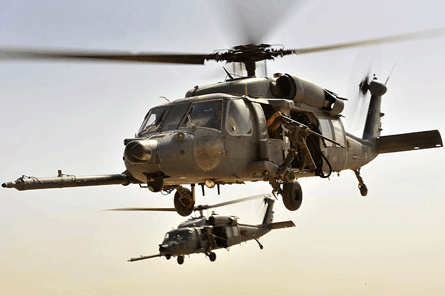The US Air Force has decided to buy 112 Sikorsky UH-60Ms to recapitalise its ageing combat search and rescue fleet, despite a standing requirement for a larger helicopter.
Sikorsky will modify the M-model aircraft to the HH-60L configuration, replacing a fleet of HH-60G Pave Hawks that has dwindled to about 101 airframes, says Lt Gen Mark Shackelford, head of USAF acquisition.
The HH-60 represents the current standard for the USAF's SAR mission, in which its crews are tasked to fly deep into enemy territory to retrieve downed airmen. "The new H-60s will be modified to be rescue helicopters, obviously with some tempering of performance," Shackelford says.
 |
|---|
© Staff Sgt Aaron Allmon/USAF |
In 2006, the USAF signed the CSAR-X contract to buy 141 Boeing HH-47s, selecting the Chinook over the Sikorsky HH-92 and Lockheed Martin/AgustaWestland HH-71. But the contract award process became a landmark example of acquisition policy.
The US Government Accountability Office sustained two protests filed by the losing bidders, and the USAF's attempts to restart the competition without heeding its recommendations failed. The service terminated the contract with Boeing in June 2009, clearing the way for a sole-source contract to Sikorsky for the smaller helicopter.
If Congress approves funding for the plan, the USAF will recapitalise its existing fleet, but fall short of plans to broaden the mission with a larger and more capable aircraft.
Under the CSAR-X programme, the USAF envisaged not only rescuing downed airmen, but also picking up small units behind enemy lines, or even ferrying cargo or passengers during natural disasters. That requirement drove it to ask bidders to provide a medium or heavylift helicopter.
The requirement for "personnel recovery" still stands, Shackelford says, and will be addressed by the USAF in the future. But for now it is focused on ensuring that downed aircrews will not lack a helicopter force ready to retrieve them.
"Those [aircraft] are busy fliers in a war and very much sought after," he says.
Source: Flight International
















